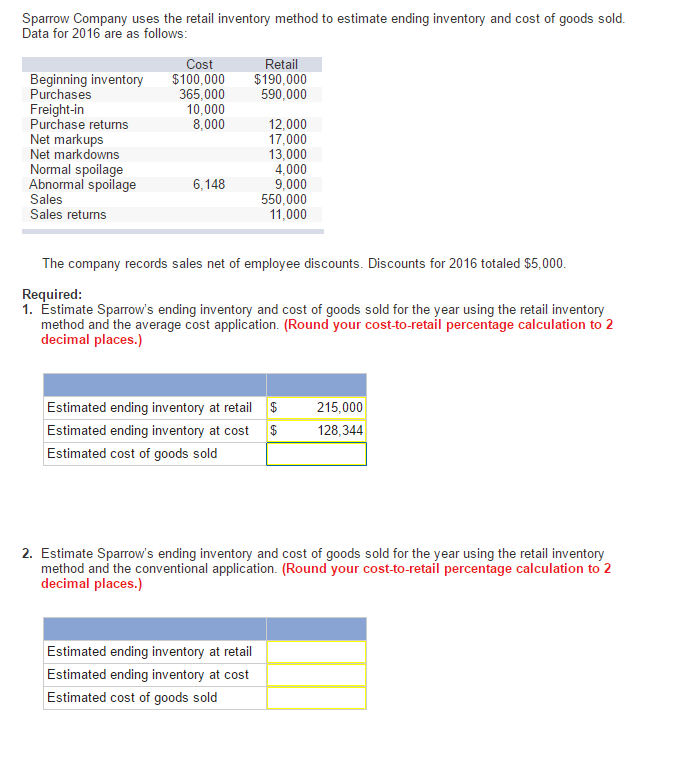
We need to multiply the units of ending inventory with the average cost following the last addition to find the value of ending inventory. We don’t need to recalculate the average cost until revolving funds for financing water and wastewater projects another batch of inventory is added to the mix, which would alter the cost. While the example above is a bit oversimplified, it illustrates the average cost method’s basic assumption.
Industries
Costs include storage space, handling the stock, the loss to the company if the items become obsolescent or deteriorated and the capital cost relating to unsold inventory. Should the number of your inventory items per batch be inconsistent, there will be a variation of costs assigned to each product. In this article, we are going to explain the average cost inventory calculation in more detail as well as highlight the pros and cons of this method. He has a CPA license in the Philippines and a BS in Accountancy graduate at Silliman University. In this case, the ending inventory to be presented in the balance sheet is $27,431.69 and the COGS to be presented in the income statement is $38,568.31. In a perpetual inventory system, we always need to update our subsidiary ledgers for every sale or purchase.
Using the Average cost inventory method (WAC) in a perpetual inventory

This method not only helps maintain consistency but also offers valuable insights into pricing strategies. Before we can even go further, FIFO and LIFO have been mentioned several in the post, but what are they? If you are going to understand the average costing method better and distinctively, we must look at them. Accurate inventory valuation is crucial as it influences business decisions and financial statements. The choice of an inventory accounting method can affect profitability, cash flow, and the perception of financial health by investors and creditors.
Comparing with Other Valuation Methods
Each method offers distinct advantages and challenges, and the choice among them can shape a company’s financial narrative. The gross profit is period retail sales minus the total spent originally for the specific goods he sold during the period. Next, the cost of goods sold (COGS) is calculated by multiplying the number of units sold by the weighted average price of $21.76.
Under average costing method, the average cost of all similar items in the inventory is computed and used to assign cost to each unit sold. Like FIFO and LIFO methods, this method can also be used in both perpetual inventory system and periodic inventory system. The main advantage of using average costing method is that it is simple and easy to apply. Moreover, the chances of income manipulation are less under this method than under other inventory valuation methods. Moreover, the average cost method aligns with a conservative approach to inventory valuation, which can be advantageous during periods of inflation.
The Average Cost Method is an inventory valuation technique used in accounting and finance to calculate the cost of goods sold (COGS) and the value of ending inventory. Under this method, the average cost of all units in inventory is calculated and applied to both the units sold and the remaining units in stock. The formula for average cost is the total cost of goods available for sale divided by the total units available for sale.
- The method gives a reasonable estimate of the inventory value when the beginning inventory and purchases are of a similar level.
- Besides FIFO and LIFO, the Average Cost Method is another common way for accountants to value inventory.
- From the company’s accounting software, the following is its reporting period information.
- Now imagine that this same company sold 50 units during this same accounting period.
Other methods of determining inventory movements included FIFO (first in first out) and LIFO (last in first out). Accountingo.org aims to provide the best accounting and finance education for students, professionals, teachers, and business owners. On 1 January, a shop has 10 units of a specific type of gaming device in inventory valued at $25 per unit. The value of Amy’s ending inventory of the soda bottles is $768.75 (75 units valued at $10.25 each) at the end of Day 7.
The main benefit of the average-cost method is its simplicity, particularly for companies that deal with large volumes of very similar items. Rather than tracking each item and its individual cost, these figures can be averaged. When negative variances occur, management must take action by identifying the root cause, improving its operations and potentially making changes to the standard cost. Inventory holding costs, or carrying costs, are those related to storing unsold inventory.
This calculation can be extended by including more points in time to achieve a more accurate average, especially if inventory levels fluctuate significantly throughout the period. For instance, you could take inventory levels at the start and end of each month or at regular intervals and calculate the average of these. The more data points, the more precise the result, as it provides a more nuanced picture of inventory movements over time. However, the weighted average cost method won’t work equally well in every situation. For example, when the batch units are very different, it may not make sense to treat them identically from a cost perspective. This is particularly true when the inventory items are rare, expensive, or unique, such as antique furnishings or custom jewelry.

